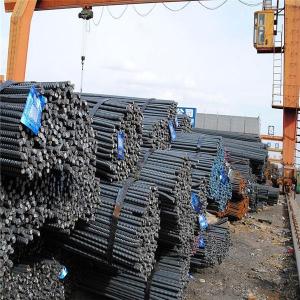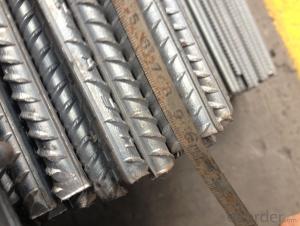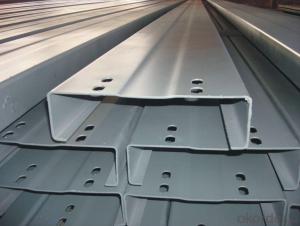Rebar Steel 12mm Grade HRB400 HRB500 China mill
- Loading Port:
- Tianjin
- Payment Terms:
- TT OR LC
- Min Order Qty:
- 100 m.t.
- Supply Capability:
- 19000 m.t./month
OKorder Service Pledge
OKorder Financial Service
You Might Also Like
Specification
Deformed Steel bar is a common steel reinforcing bar, used in reinforced concrete and reinforced masonry structures.
It is formed from mild steel, and is given ribs for better frictional adhesion to the concrete. The Deformed Steel bar is an
iron rod , a weldable plain reinforcing steel bar, and can be used as well for steel meshes.
Features
1、Pure steel quality, stable chemical contents, small tolerance.
2、Constant Quality, good drawing performance.
3、High dimension accuracy degree, accuracy degree of Level C up to 80%, smooth surface, less scale, easy to be pickled.
4、Automatic bundling with 4 lines by Machine in tidy and good looks
5、Big high quality percentage, small coil percentage, and heavy coil weight for Hard Coil.
6、High sorbitizing percentage.
Product Description :
Chemical composition (%): | Steel | C | Si | Mn | P | S | Ceq | ||||
HRB335 |
0.25 |
0.80 |
1.60 |
0.045 |
0.045 | 0.52 | |||||
HRB400 | 0.54 | ||||||||||
HRB500 | 0.55 | ||||||||||
Mechanical properties | Steel | Rel/ MPa | Rm/ MPa | A/ % | Agt/ % | ||||||
≥ | |||||||||||
HRB335 | 335 | 455 | 17 |
7.5 | |||||||
HRB400 | 400 | 540 | 16 | ||||||||
HRB500 | 500 | 630 | 15 | ||||||||
Package: | Standard export packing or as customer's request | ||||||||||
Application: | Construction, building, bridge, road. ect | ||||||||||
Payment terms | 1).100% irrevocable L/C at sight. | ||||||||||
Delivery time | 15-30 days after receipt of L/C or deposit by T/T | ||||||||||

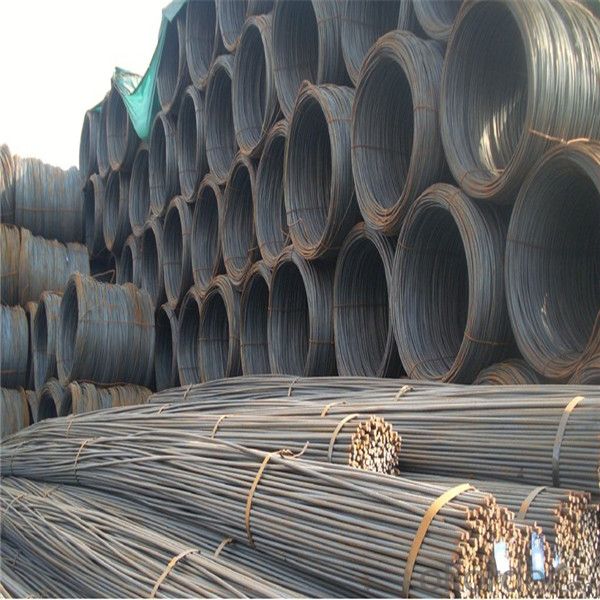
Packing:
In bundles, each bundle weight 3.5 tons. Load by container or by bulk verssel.
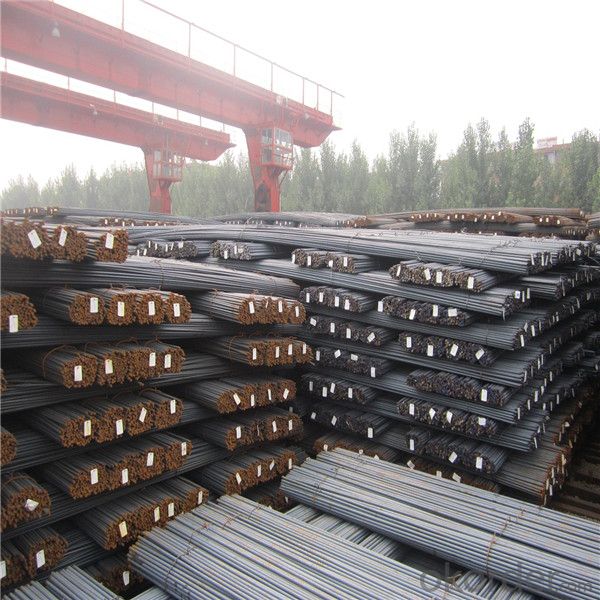
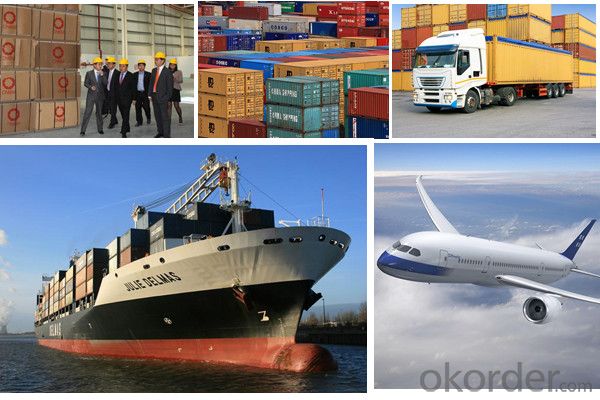
Our service
(1) We cooperate with famous factories with advanced equipment and well trained workers.
(2) We can provide factory price with trading company service.
(3) We continuously work on the improvement of our processes, guaranteeing consistently high standards
of quality to keep none compensation.
(4) We guarantee 24 hours response and 48 hours solution providing service.
(5) We accept small order quantity before formal cooperation.
(6) We deliver the agreed quality at the agreed time, reacting to changes in customer wishes in a flexible way.
(7) Due to our volume and selling power, we have excellent freight rates with shipping lines.
(8) We strive to always be fair and honest in our dealings with customers.
(9) We strive to work together with customers to achieve much more than we can achieve alone.
(10) Through our passion and commitment we aim to be a market leader in all our key markets. To maintain
our position as market leader we must continue to add value in all that we do.
FAQ:
1.Q: What's your MOQ(minimum order quantity)?
A: One full container, mixed acceptable .
2. Q: What's your packing methods?
A: Packed in bundle or bulk ..
3. Q: How can I buy CNBM products in my country?
A:Please send us an inquiry or email ,we will reply to you if there is distributor in your country
4. Q: Can we visit your factory?
A: Warmly welcome. Once we have your schedule, we will arrange the professional sales team to follow up your case.
5. Q: How long does it take to get the product if i place an order?
A:With the process of your requirements,we will pack and deliver in 3-7 days. If it is by sea shipment,it will take 15-45 days depending on different locations
- Q: What are the common misconceptions about steel rebars?
- One common misconception about steel rebars is that they are only used in large construction projects. While it is true that rebars are commonly used in the construction of large buildings, bridges, and other infrastructure, they are also utilized in smaller projects such as residential homes, retaining walls, and even garden structures. Rebars provide strength and reinforcement to concrete structures, ensuring their durability and longevity. Another misconception is that all rebars are the same. In reality, there are various types of rebars available, each with specific characteristics and purposes. Common types include carbon steel rebars, epoxy-coated rebars, stainless steel rebars, and galvanized rebars. These different types are used depending on factors like the environment, exposure to corrosive elements, and specific project requirements. Some people also believe that rebars do not require proper placement or spacing within the concrete structure. However, incorrect placement or inadequate spacing of rebars can lead to structural weaknesses, compromising the integrity of the concrete. It is crucial to follow engineering specifications and guidelines to ensure the rebars are correctly positioned and spaced to provide optimal reinforcement. Another misconception is that steel rebars rust easily. While it is true that steel can corrode when exposed to moisture and oxygen, proper construction practices can significantly minimize this risk. For instance, the use of epoxy-coated or galvanized rebars provides an additional layer of protection against corrosion. Additionally, proper concrete cover and application of protective coatings can help prevent moisture penetration and extend the lifespan of the rebars. Lastly, some people believe that steel rebars are expensive and not cost-effective. While it is true that steel rebars can add to the overall cost of a construction project, they are a necessary investment for ensuring structural integrity and safety. The cost of repairing or replacing a structure due to inadequate reinforcement far outweighs the initial investment in quality rebars. Moreover, the use of rebars can reduce the need for excessive concrete, resulting in cost savings in material and construction time. In conclusion, it is important to dispel common misconceptions about steel rebars. They are not limited to large construction projects, come in different types, require proper placement and spacing, can be protected against corrosion, and are a cost-effective investment for ensuring the durability and safety of concrete structures.
- Q: What is the purpose of stirrups in steel rebar reinforcement?
- The purpose of stirrups in steel rebar reinforcement is to provide lateral support and enhance the overall structural integrity of reinforced concrete elements. Stirrups are typically made of bent steel bars that are placed around the longitudinal rebar within a concrete column, beam, or slab. One of the main functions of stirrups is to prevent the longitudinal rebar from buckling or bending due to external forces such as compression, tension, or shear. By enclosing the rebar in a series of closely spaced stirrups, the overall strength and stability of the reinforced concrete element are significantly increased. Stirrups also play a crucial role in resisting shear forces, which occur when a structure is subjected to lateral loads or earthquakes. These forces can cause the concrete to crack and fail. However, the presence of stirrups helps distribute the shear stresses more evenly, effectively preventing the formation and propagation of cracks. Furthermore, stirrups enhance the bond between the rebar and concrete by providing additional contact area. This results in improved load transfer and prevents slippage between the rebar and the surrounding concrete. In summary, the purpose of stirrups in steel rebar reinforcement is to enhance the structural strength, stability, and durability of reinforced concrete elements. They provide lateral support, resist bending and shear forces, and improve the bond between the rebar and concrete. By incorporating stirrups into the reinforcement design, engineers can ensure that the concrete structure can withstand various external loads and maintain its integrity over time.
- Q: What is the minimum ductility requirement for steel rebars?
- The minimum ductility requirement for steel rebars is typically specified as a minimum elongation or reduction in area value, which is commonly set at 14% or 35%, respectively.
- Q: Are there any environmental concerns related to the production of steel rebars?
- The production of steel rebars raises several environmental concerns, including the significant energy requirement for steel production. To produce steel, large amounts of fossil fuels like coal and natural gas are used, contributing to greenhouse gas emissions and climate change. Another concern is the extraction and mining of iron ore, the main raw material for steel production. This process can result in deforestation, habitat destruction, and soil erosion. Moreover, mining generates substantial waste material that can contaminate nearby water sources. In addition, the steel production process emits air pollutants such as particulate matter, sulfur dioxide, and nitrogen oxides. These pollutants can harm air quality and human health, causing respiratory problems and contributing to the formation of smog. It is worth noting that the steel industry is taking steps to address these environmental concerns. For instance, many steel producers are adopting more energy-efficient technologies and exploring alternative energy sources to reduce carbon emissions. Additionally, the recycling of steel is becoming more widespread, conserving resources and reducing the environmental impact of steel production. Overall, although the production of steel rebars does present environmental concerns, ongoing efforts are being made to mitigate these impacts and make the process more sustainable.
- Q: What are the common challenges faced during the installation of steel rebars?
- Some common challenges faced during the installation of steel rebars include ensuring proper placement and alignment, dealing with the weight and size of the rebars, avoiding damage to the rebars during handling and transportation, ensuring adequate anchorage and spacing, and coordinating with other construction activities to avoid conflicts.
- Q: How do steel rebars prevent the concrete from cracking under tension?
- Steel rebars reinforce concrete and increase its structural integrity, preventing cracking under tension. Concrete has low tensile strength and tends to crack when subjected to tensile forces. However, when steel rebars are embedded in the concrete, they absorb and distribute these forces, acting as reinforcement. Typically made of high-strength steel, the rebars have a much higher tensile strength compared to concrete. As a result, when the concrete is under tension, the rebars bear most of the load, preventing cracking. The rebars act as a framework or skeleton within the concrete, resisting the tensile forces and ensuring its structural stability. Furthermore, the bond between the steel rebar and the concrete also plays a role in preventing cracking under tension. The ribbed or deformed surface of the rebars enhances the bond with the surrounding concrete, creating a strong connection. This bond allows the rebars to transfer the tensile forces to the concrete matrix more effectively, reducing the risk of cracking. By reinforcing the concrete, steel rebars help distribute the tensile forces evenly throughout the structure. This prevents localized stress concentrations and minimizes the chances of cracks forming. Additionally, if cracks do occur, the presence of rebars can help control their propagation by acting as barriers that restrict further spread. In conclusion, steel rebars provide reinforcement, increase the strength of concrete, and prevent cracking under tension. They bear the tensile forces, distribute them evenly, and enhance the bond between the rebar and the concrete. This reinforcement ensures the structural integrity of the concrete and helps prevent cracking.
- Q: How do steel rebars affect the workability of concrete?
- Steel rebars can significantly affect the workability of concrete by enhancing its tensile strength and overall structural integrity. The presence of rebars allows for the construction of larger and more durable concrete structures. However, the presence of rebars can also make the concrete mixture stiffer and more difficult to handle during the pouring and placing process. This decreased workability requires additional effort and may necessitate the use of additives or adjusting the concrete mixture proportions to maintain the desired level of workability.
- Q: How do steel rebars resist fatigue and creep?
- Steel rebars resist fatigue and creep through their inherent material properties and proper design considerations. Fatigue refers to the gradual weakening of a material under repeated cyclic loading. Steel rebars are specifically designed to withstand fatigue by their high tensile strength and ductility. The tensile strength of steel allows it to resist the stress caused by cyclic loading, while its ductility allows it to deform without fracturing. This combination of properties enables steel rebars to endure numerous load cycles without failure. Additionally, steel rebars can be further enhanced to resist fatigue by employing various techniques such as heat treatment, surface coatings, and alloying. These methods improve the material's fatigue resistance and extend its service life under cyclic loading conditions. Creep, on the other hand, refers to the gradual deformation of a material under constant sustained loading. Steel rebars resist creep through their high stiffness and resistance to plastic deformation. The stiffness of steel allows it to maintain its shape and resist deformation under sustained loads. Moreover, the resistance to plastic deformation prevents excessive stretching or elongation, which can lead to creep failure. Proper design considerations also play a crucial role in enhancing the resistance of steel rebars to fatigue and creep. This includes ensuring appropriate reinforcement spacing, proper anchorage, and adequate concrete cover to protect the rebars from external factors that could induce fatigue or creep. In summary, steel rebars resist fatigue and creep due to their high tensile strength, ductility, stiffness, and resistance to plastic deformation. By utilizing proper design considerations and potentially implementing additional techniques, steel rebars can withstand cyclic loading and sustained loads for extended periods, ensuring their durability and structural integrity.
- Q: What is the difference between rebar and round steel?
- In the use of threaded steel, there is a certain mechanical strength, bending deformation properties and welding process performance.
- Q: What are the different types of coating for steel rebars?
- There are several different types of coatings that can be applied to steel rebars to provide protection against corrosion and enhance their durability. These coatings include: 1. Epoxy Coating: Epoxy coating is a commonly used type of coating for steel rebars. It is a high-performance coating that provides excellent protection against corrosion. Epoxy coatings are typically applied in multiple layers to ensure a thick and durable coating. 2. Galvanized Coating: Galvanized coating involves applying a layer of zinc to the surface of the steel rebar. This coating provides an effective barrier against corrosion and can significantly extend the lifespan of the rebar. Galvanized coatings can be applied through hot-dip galvanizing or electroplating processes. 3. Fusion-Bonded Epoxy Coating (FBE): Fusion-bonded epoxy coating is another popular choice for steel rebars. It involves applying a layer of epoxy powder to the rebar, which is then fused to the surface through a heating process. FBE coatings offer excellent resistance to chemicals and corrosion. 4. Stainless Steel Coating: Stainless steel coatings can be applied to steel rebars to provide enhanced resistance against corrosion. This coating is typically achieved through a process called thermal spray, where a layer of stainless steel particles is sprayed onto the rebar surface. 5. Polyethylene Encasement: Polyethylene encasement involves wrapping the steel rebar with a layer of polyethylene material. This coating provides a physical barrier against moisture and chemicals, preventing corrosion from occurring. Each type of coating has its own advantages and suitability for different applications. The choice of coating for steel rebars depends on factors such as the environment they will be exposed to, the required lifespan of the rebars, and the specific project requirements.
Send your message to us
Rebar Steel 12mm Grade HRB400 HRB500 China mill
- Loading Port:
- Tianjin
- Payment Terms:
- TT OR LC
- Min Order Qty:
- 100 m.t.
- Supply Capability:
- 19000 m.t./month
OKorder Service Pledge
OKorder Financial Service
Similar products
Hot products
Hot Searches
Related keywords














